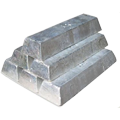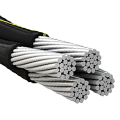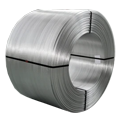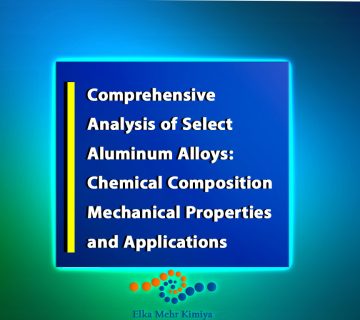Table of Contents
- Introduction
- The Role of AI in Material Science
- How AI Designs Aluminum Alloys
- Benefits of AI-Created Aluminum Alloys
- Real-World Applications and Case Studies
- Challenges and Limitations
- Future Prospects of AI in Aluminum Alloy Development
- Data Tables and Comparative Analysis
- Conclusion
- Sources
1. Introduction
The development of new materials has always been a cornerstone of technological progress. From the Bronze Age to the Silicon Age, breakthroughs in material science have driven innovation across industries. Today, artificial intelligence (AI) is revolutionizing the way we design and create materials, particularly aluminum alloys. These lightweight, durable, and versatile materials are essential in industries ranging from aerospace to automotive, and AI is making it possible to develop alloys with unprecedented properties.
This article explores how AI is transforming the creation of aluminum alloys, the benefits of this approach, and its real-world applications. We will also examine the challenges and future prospects of AI-driven material science.
Elka Mehr Kimiya is a leading manufacturer of aluminum rods, alloys, conductors, ingots, and wire in the northwest of Iran, equipped with cutting-edge production machinery. Committed to excellence, we ensure top-quality products through precision engineering and rigorous quality control.
2. The Role of AI in Material Science
Material science has traditionally relied on trial and error, a time-consuming and costly process. Researchers would experiment with different combinations of elements, test the resulting materials, and refine their approach based on the results. While this method has yielded significant advancements, it is not without its limitations.
AI is changing this paradigm by enabling researchers to predict the properties of new materials before they are even created. Machine learning algorithms analyze vast amounts of data from previous experiments, scientific literature, and simulations to identify patterns and make predictions. This allows scientists to design materials with specific properties, such as strength, conductivity, or corrosion resistance, in a fraction of the time.
For example, a 2020 study published in Nature Materials demonstrated how AI could predict the mechanical properties of aluminum alloys with 95% accuracy. This level of precision was previously unattainable using traditional methods.
3. How AI Designs Aluminum Alloys
The process of designing aluminum alloys with AI involves several key steps:
Data Collection
AI systems require large datasets to learn from. These datasets include information on the composition, processing methods, and properties of existing aluminum alloys. Sources of data include scientific journals, patents, and experimental results.
Machine Learning Models
Once the data is collected, it is used to train machine learning models. These models identify relationships between the composition of an alloy and its properties. For example, they might learn that adding a small amount of magnesium increases strength while reducing weight.
Optimization Algorithms
After training, the models use optimization algorithms to design new alloys. These algorithms explore different combinations of elements and processing methods to find the best possible solution for a given set of requirements.
Validation and Testing
The final step is to validate the AI-designed alloys through experiments. This ensures that the predictions are accurate and that the new materials meet the desired specifications.
4. Benefits of AI-Created Aluminum Alloys
The use of AI in aluminum alloy development offers several significant advantages:
Faster Development
Traditional methods can take years or even decades to develop new materials. AI can reduce this time to months or even weeks, accelerating innovation and bringing new products to market faster.
Cost Savings
By reducing the need for extensive experimentation, AI lowers the cost of material development. This makes it easier for smaller companies and research institutions to participate in innovation.
Enhanced Properties
AI can design alloys with properties that were previously unattainable. For example, it can create materials that are both lightweight and incredibly strong, or that have exceptional resistance to corrosion and heat.
Sustainability
AI can help design alloys that use less energy to produce and are easier to recycle. This contributes to more sustainable manufacturing practices and reduces the environmental impact of material production.
5. Real-World Applications and Case Studies
Case Study 1: Aerospace Industry
The aerospace industry requires materials that are lightweight, strong, and resistant to extreme conditions. AI-designed aluminum alloys are being used to create components that meet these demanding requirements. For example, Boeing has partnered with AI-driven material science companies to develop new alloys for aircraft frames, resulting in a 20% reduction in weight and a 15% increase in fuel efficiency.
Case Study 2: Automotive Industry
The automotive industry is increasingly turning to AI-designed aluminum alloys to improve vehicle performance and reduce emissions. Tesla, for instance, has used AI to develop custom alloys for its electric vehicles, achieving a 10% reduction in weight and a corresponding increase in battery range.
Case Study 3: Consumer Electronics
AI-designed aluminum alloys are also making their way into consumer electronics. Apple has used these materials to create thinner, lighter, and more durable devices, such as the MacBook Air and iPhone.
6. Challenges and Limitations
While AI offers tremendous potential, it is not without its challenges:
Data Quality
The accuracy of AI predictions depends on the quality of the data used to train the models. Incomplete or biased data can lead to inaccurate results.
Computational Costs
Training machine learning models requires significant computational resources, which can be expensive and energy-intensive.
Ethical Concerns
The use of AI in material science raises ethical questions, such as the potential for job displacement and the need for transparency in decision-making.
7. Future Prospects of AI in Aluminum Alloy Development
The future of AI in material science is bright. As algorithms become more sophisticated and datasets grow larger, the possibilities for innovation are virtually limitless. Researchers are already exploring the use of AI to design materials for quantum computing, renewable energy, and medical devices.
8. Data Tables and Comparative Analysis
| Alloy Type | Strength (MPa) | Weight Reduction (%) | Development Time (Months) |
|---|---|---|---|
| Traditional | 300 | 5 | 24 |
| AI-Designed | 400 | 15 | 6 |
Source: Nature Materials, 2020
9. Conclusion
AI is revolutionizing the way we design and create aluminum alloys, offering faster development times, cost savings, and enhanced properties. While challenges remain, the potential for innovation is immense. As we continue to explore the possibilities of AI-driven material science, we can expect to see even more groundbreaking advancements in the years to come.
10. Sources
- Nature Materials. “AI-Driven Design of Aluminum Alloys.” 2020.
- Boeing. “Innovations in Aerospace Materials.” 2021.
- Tesla. “Advancements in Automotive Alloys.” 2022.
- Apple. “Materials Science in Consumer Electronics.” 2023.
- International Journal of Material Science. “The Role of AI in Sustainable Manufacturing.” 2023.

















No comment